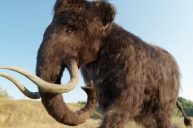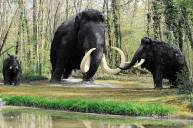Scientists have been on a journey to bring back a long lost animal. Recently, they have made some major breakthroughs. While there has been talk of brining back the woolly mammoth and the dodo bird there is a new animal that is making it's comeback, the Tasmanian tiger.
Will Scientists Really Be Able To Bring Back Long Lost Animal?
While I may have some reservations and fears about bringing back animals that have long since been gone, Colossal Biosciences has no such qualms. Colossal Biosciences is a company that focuses on genetic research. They use that research in hopes to "de-extinct" many species that were lost to us long ago. Now, USA Today shares that Colossal Biosciences announced that they have made significant progress in regards to the Tasmanian tiger.
As of last week, "It has assembled the most complete Tasmanian tiger genome to date." Additionally, a Colossal press release shared some incredible news. "Scientists have also been able to isolate long strands of RNA molecules form a 110-year-old skull that was skinned and preserved in ethanol."
Does this mean that they may be successful in their dream to bring back the long lost animal?
What Can We Expect From Colossal Biosciences?

Getty Images, Aunt_Spray
Can they actually do it? The scientists at Colossal Biosciences seem to have the utmost confidence in their work. With all of their recent work "scientists now have a detailed blueprint" towards bringing the Tasmanian tiger back to life. Colossal's co-founder and CEO said, "We are pushing as fast as possible to create the science necessary to make extinction a thing of the past." He further elaborates that "these advancements in this project are a huge step forward in that mission."
The Tasmanian tiger is not the only animal that scientists are hoping to bring back. They also set their sights on the woolly mammoth and the dodo bird. In the attempt to bring back any long lost animal, it is imperative that the scientists ensure that they can survive the current environment that they will be introduced to.
The scientists at the company share that they "eventually reestablish the Tasmanian tiger on the island of Tasmania off the southeast tip of Australia." They plan on doing this by "using gene editing technology on a preserved thylacine genome to create an embryo."
It seems that they are heading in the right direction to accomplish that dream. The preservation of the Tasmanian tiger head has allowed scientists to get closer than ever to bringing back the long lost animal. The team has been able to build "the most complete and contiguous ancient genome of any species to date."




